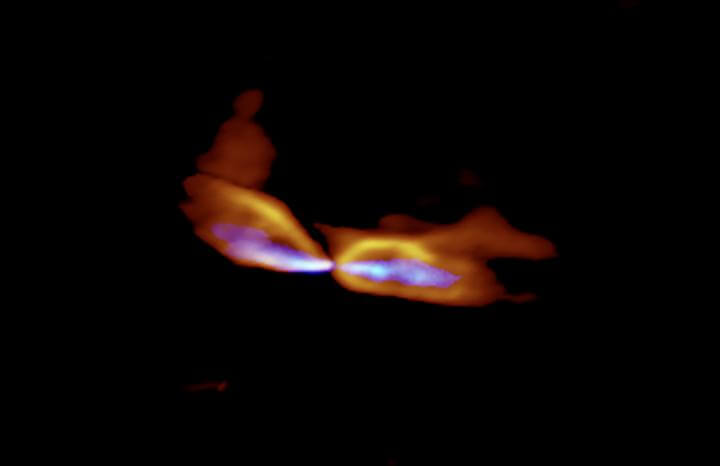Using an array of ALMA radio telescopes, astronomers for the first time showed that the slow outflow of matter and high-speed jets observed in newborn stars originate in different parts of the protoplanetary disk and have a different nature.
Stars in the Universe have a wide range of masses, some of them are hundreds of times” heavier “than the Sun, others, on the contrary, are up to ten times” lighter “than it. To understand the reason for this diversity, we need to study the process of star formation, that is, the aggregation of cosmic gas and dust.
-authors of the study
The nascent star collects gas from its surroundings, attracting it, but not all matter falling on it eventually becomes part of the luminary, as some of it is thrown into space in the form of wide outflows and narrow jets of particles moving at different speeds. Observations on this young luminary give scientists hints that help uncover the processes of mass accumulation.
Today there are two competing models that describe the formation mechanism of protostars for slow outflows and fast jets. The first assumes that they are formed independently of each other in different parts of the disk from the gas surrounding the central body. The other is that at first a high-speed jet is formed, which captures the material surrounding it and forms slower flows of matter. Despite numerous studies, astronomers do not yet have a definitive answer as to which model is correct.
In an attempt to put an end to this dispute, a team of astronomers from Kyushu University (Japan) conducted observations of the newborn star MMS /OMC-3 in the Orion Cloud at a distance of about 1600 light years from Earth, during which, thanks to the high sensitivity, ALMA was able to estimate the speed of slow and fast outflows , their relative position and the time elapsed since the moment of their occurrence.
We discovered that the high-speed jet and the slow outflow were launched by a star 500 and 1300 years ago and extend by 11 and 14 thousand astronomical units, respectively. They are quite young.
But even more interesting is that the outflow axes are offset by 17 degrees relative to each other. The reason for this could be the precession of the young star, but in such a scenario much more time is needed, and in this case, given the youth of the structures, this mismatch, according to the authors of the study, is related to their nature and most likely tilts the balance to independent models.
The observation fits well with the model in which the expanding slow outflow of matter is ejected from the outer region of the gaseous disk, while the narrow jet is launched independently of it in the inner region of the disc. At the same time, the observed displacement of the axes may indicate a deformation of the disk.
Astronomers plan to conduct more observations on ALMA in order to find similar MMS5/OMC-3 young stars. The study of such objects, the researchers note, will help to understand the mechanisms that give life to slow outflows and high-speed jets, as well as tell us more about the processes of accretion and ejection of matter in the very early stages of star formation.
Different nature of matter flow and jets in newborn stars
Click To Tweet
The post Different nature of matter flow and jets in newborn stars appeared first on Upcosmos.com.
